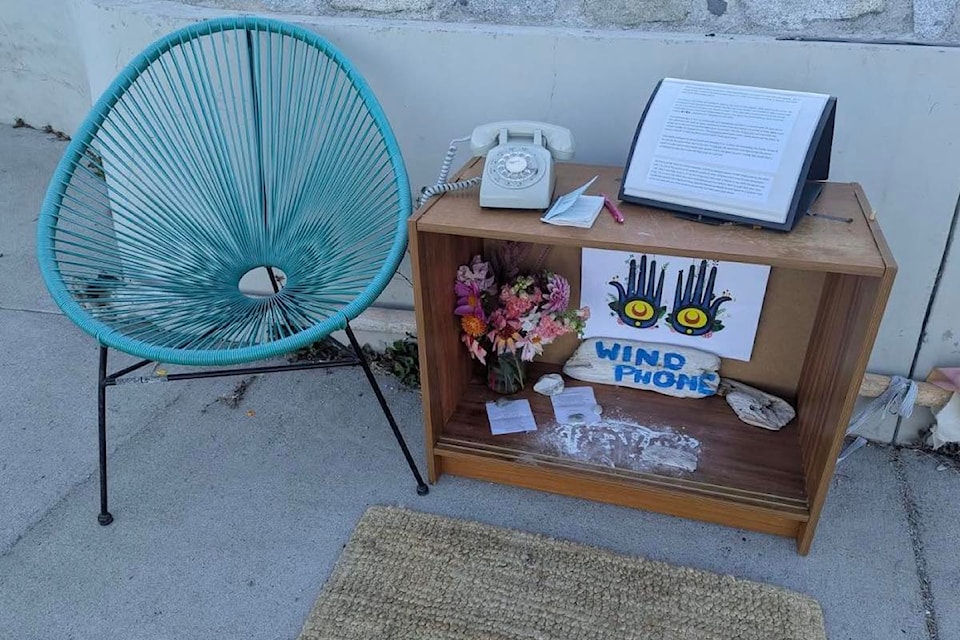Even the dead can't escape local bureaucracy in the City of Victoria.
A 'wind phone' near Clover Point, offering a unique opportunity for folks to 'speak' to people in their lives who have died, has been removed by the city because it did not have the correct permissions.
"The organizers are welcome to reach out to our events team and submit a Special Event Permit application if they would like this display to continue," said Colleen Mycroft, manager of media relations.
According to the city's website, a Special Event Permit application should be made at least four weeks in advance, with proof of a $5 million General Liability Insurance policy.
"The city also has other programs such as Victoria at Dusk where this would be a welcome addition to that event, as well as the vacant storefront program, as a couple of examples," continued Mycroft.
The wind phone concept was created by Japanese architect Itaru Sasaki in 2010, as a way to cope with his cousin’s death. The idea is simple – a disconnected phone offers a way to reconnect with a lost loved one by making a 'call', free to say whatever is in your heart.
Nearly 450 wind phones now exist across the world, according to the 'My Wind Phone' website, including one in Greater Victoria’s Royal Oak Burial Park and another hidden in the trails of Sooke's William Simmons Park.
It was mid-July when the wind phone first appeared at its Dallas Road location.
Lovingly assembled by therapist and community artist Pamela Lewis, it was a way for her to navigate her own grief after the loss of her father Peter Lewis last year, and more recently the unexpected death of her friend Catharine Meir.
“Sometimes I just feel like calling my dad,” she said. “I am also grieving the conflicts in the world and loss of some of our humanity especially with Gaza and Palestine – those were my motivations.”
Her installation featured a vintage rotary phone atop a side table, a chair and a quiet view – the setup next to the ocean inviting reflection. For those unable to speak, a journal and pen gave their grief another voice.
"The telephone link isn't connected, but your head is," read the phone's instructions. "It is connected by love, memories and longing – and the wind knows the way.
"There is no right or wrong way to use a wind phone. You can talk, cry, whisper or sit in silence. It is a space to be with your thoughts, your feelings and the ones you miss.”
Lewis thought the idea might resonate with folks passing by, but says she underestimated how deeply it would strike.
"Communities need avenues to deal with difficult experiences that bring us together,” she said. “It was a free way to remind us all we are not alone facing our losses.”
Online, people quickly embraced the idea, some posting heartfelt reflections of their own encounters.
"I stopped and left a message about my brother, I really miss him," said one person on Facebook.
"First time seeing this idea," said another. "Would be beneficial for a child missing a lost relative.”
Lewis was not surprised the city removed the installation – only anxious that she might lose the journal filled with handwritten messages. Fortunately, the city held on to all the items and Lewis was able to retrieve them.
While she currently has no motivation to jump through the required hoops to obtain a permit to allow for the phone’s return, Lewis has plans of a different kind to honour the moment it created.
“I plan on making some of the notes into another art installation at one point,” she says. “I do want to honour everyone’s beautiful moments and words.”
To find out more about wind phones, visit: www.mywindphone.com.



